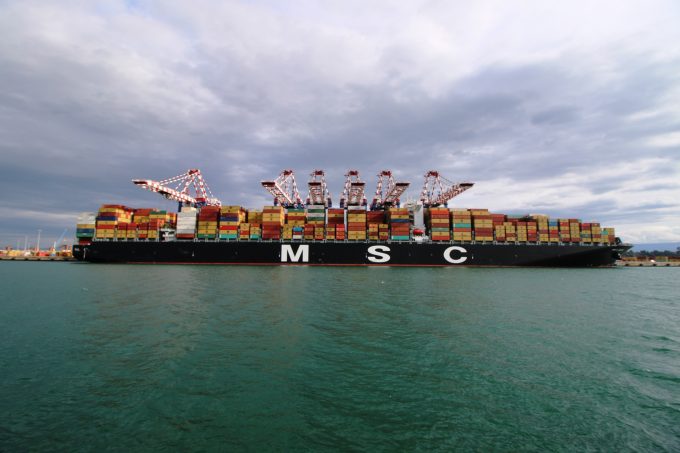Container spot rates have peaked as all major trades see prices fall
There was more evidence in this week’s container port freight markets that peak prices on ...
TFII: SOLID AS USUALMAERSK: WEAKENINGF: FALLING OFF A CLIFFAAPL: 'BOTTLENECK IN MAINLAND CHINA'AAPL: CHINA TRENDSDHL: GROWTH CAPEXR: ANOTHER SOLID DELIVERYMFT: HERE COMES THE FALLDSV: LOOK AT SCHENKER PERFORMANCEUPS: A WAVE OF DOWNGRADES DSV: BARGAIN BINKNX: EARNINGS OUTODFL: RISING AND FALLING AND THEN RISING
TFII: SOLID AS USUALMAERSK: WEAKENINGF: FALLING OFF A CLIFFAAPL: 'BOTTLENECK IN MAINLAND CHINA'AAPL: CHINA TRENDSDHL: GROWTH CAPEXR: ANOTHER SOLID DELIVERYMFT: HERE COMES THE FALLDSV: LOOK AT SCHENKER PERFORMANCEUPS: A WAVE OF DOWNGRADES DSV: BARGAIN BINKNX: EARNINGS OUTODFL: RISING AND FALLING AND THEN RISING

Maersk Line and MSC have announced they will cut Asia-North Europe port calls from 95 to 83 across their five 2M Alliance weekly service loops.
Its first major network revision since its launch at the beginning of 2015 will take place after new schedules are phased in in the third quarter of the year.
The 2M’s weekly port calls in Asia will reduce to 44 from 54, North Europe calls will be cut by one to 29 and there will be fewer transhipment calls.
The West Mediterranean hub of Tangier will lose one call as the revised network will include transhipment calls only at Sines, Algeciras, Salalah,Dubai and Colombo.
Japanese ports are the biggest losers in Asia, with three of their current four direct calls being culled, while Hong Kong and Singapore also both lose one direct weekly 2M call.
Alphaliner said MSC was in the process of reorganising its Japanese feeder service to compensate for the dropping of 2M direct calls at Kobe and Nagoya, while Maersk had “not yet announced how it would serve the Japanese market” after the new schedules are implemented.
In North Europe, Rotterdam concedes its current double call on the AE1/Shogun service in favour of Felixstowe, while Le Havre drops from three to two weekly calls.
Europe’s second biggest container port, Antwerp, maintains its four weekly calls in the network shakeup, although the Belgian port gains two new services at the expense of a double call on two other services.
Both MSC and Maersk emphasised the improved transit times of the revised network, claiming those between Asia and Rotterdam and Bremerhaven, would be “improved by as much as four days”.
MSC senior vice president Caroline Becquart said: “We’re committed to developing the best product in the market, both in terms of reliability, port coverage and transit time performance.”
Vincent Clerc, chief commercial officer at Maersk Line, added: “We are utilising our scale to deliver a better product. With the largest network and the deployment of an increasingly uniform fleet of ultra large container vessels, we maintain our extensive direct coverage while focusing each service towards best in class transit times to specific markets on the trade.”
In terms of average capacity per vessel compared with the other three alliances, the 2M alliance currently deploys the biggest ships between Asia and North Europe – the smallest being 13,000 teu on the AE1/Shogun and AE6/Lion loops, and the largest the 19,200 teu ships on the AE10/Silk.
However, it is interesting to note that in their network revamp, MSC and Maersk are focusing on transit times ahead of the major alliance rejigs next April.
Indeed, there is talk within the industry that the recently announced THE Alliance is discussing scheduling options that would include at least one ‘express’ service from Asia to North Europe, as the carriers see this as an added value differentiator to the 2M mega-ship dominance.
As part of their announcement, Maersk and MSC also stressed the stability of the 2M alliance compared with the network uncertainty of the other alliances.
“The market has undergone considerable change recently, meaning that now more than ever, customers are seeking a stable and reliable partner,” said Ms Becquart.
Comment on this article